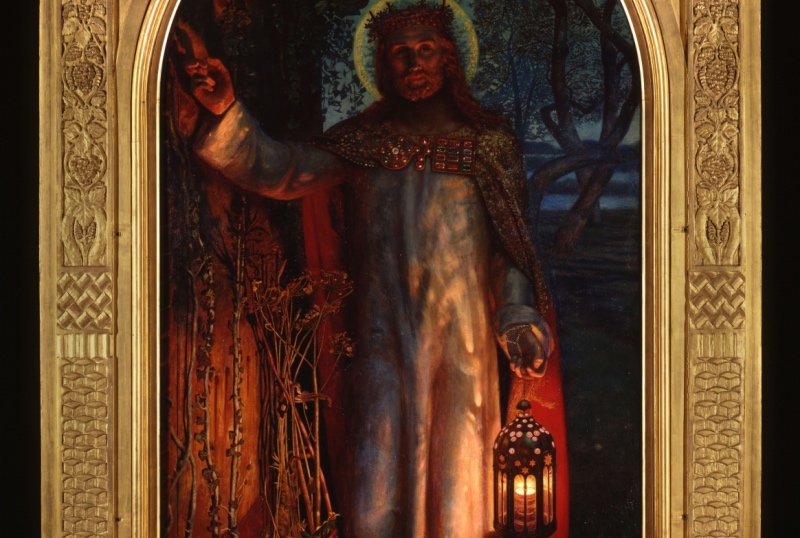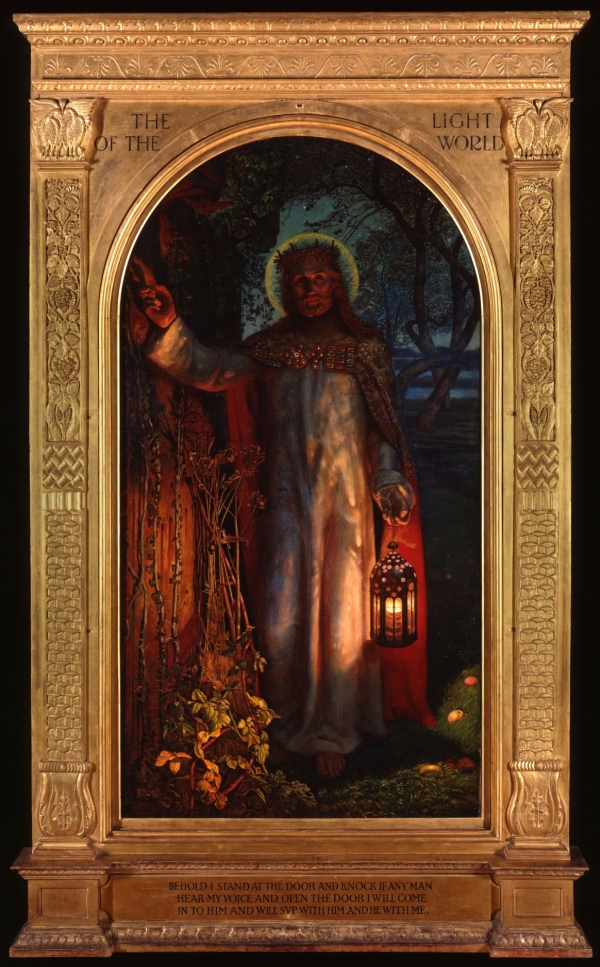
DAVID ADAMS looks at one of the most famous English depictions of Christ…
An allegorical painting by the 19th century English Pre-Raphaelite artist, William Holman Hunt, the painting The Light of the World shows a figure representing Christ standing at a door in a pre-dawn garden setting and holding a lantern.

The Light of The World in St Paul’s Cathedral. PICTURE: The Chapter of St Paul’s Cathedral
Hunt said the oil on canvas work, painted between 1851-53, illustrated the verse of Revelation 3:20: “Behold, I stand at the door and knock; if any man hear My voice, and open the door, I will come in to him, and will sup with him, and he with Me”. It also, of course, references Christ’s words recorded in the Gospel of John: “I am the Light of the World; he who follows Me will not walk in darkness, but will have the Light of life”.
There are two lights in the work – the lantern and the light around Christ’s head with the lantern said to represent the “light of conscience” and the light around Christ’s head said to be represent the “light of salvation”. The door, said to represent the human soul, has no handle, meaning it could only be opened from the other side – that is, by those who seek Christ (but the vines growing across the door and its rusty hinges suggest it hasn’t been opened). Christ is, therefore, depicted to be asking permission to enter.
The painting was exhibited at the Royal Academy of Arts in 1854 to much acclaim and can now be seen in a side chapel at Keble College in Oxford to which it was donated in 1872 by Martha Coombe, the widow of Thomas Coombe who was a patron of the Pre-Raphaelites (there was some controversy over its location at the college and in the end the chapel was constructed to house it). Its popularity was reflected in the fact composer Arthur Sullivan wrote an oratorio of the same name based upon it.
Hunt went on to complete a second, smaller version of the painting between 1851 and 1856, and that can be seen at the Manchester City Art Gallery which purchased it in 1912.
He also painted a third, life-size version (apparently after hearing Keble College were charging people admission to see the original work, an idea he didn’t like) between 1900 and 1904 (although, elderly and in ill-health, he was assisted in this work by English painter Edward Robert Hughes).
This work was purchased by industrialist Charles Booth and taken on a world tour as a “sermon in a frame” including to Canada, South Africa, New Zealand and Australia where it was said 80 per cent of the population viewed it before, in 1908, it was donated to St Paul’s Cathedral in London where it can still be seen as an altarpiece in the cathedral’s Middlesex Chapel (Hunt himself is buried in the cathedral).





